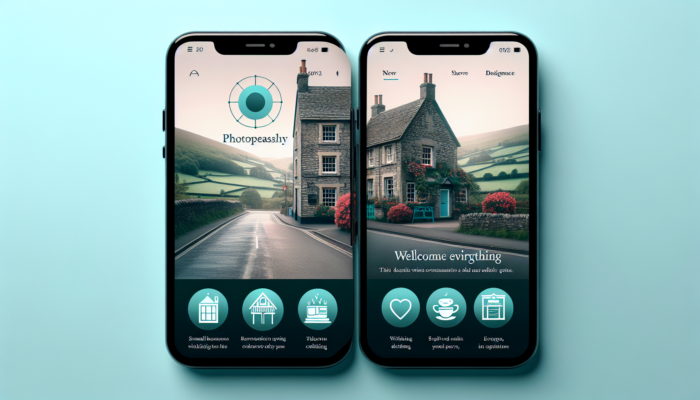Serving Zero and surrounding areas for over 25 years.
Trusted by local business for reliable website design, SEO services and Digital Marketing in Somerset, Dorset, Devon, Wiltshire and Gloucestershire. 30 years of online marketing experience across the world.
Table of Contents
ToggleComprehending the Dynamics of Zero-Click Searches
What Exactly Constitutes Zero-Click Searches?

Create Content for Zero-Click Searches: Zero-click searches occur when users find the information they need directly on the search engine results page (SERP) without the need to click through to an external website. This trend is increasingly prevalent, driven by sophisticated search engine algorithms and advanced features that facilitate a more efficient search experience. Users highly value the convenience of securing immediate answers, underscoring the escalating significance of optimising content for such searches. Common varieties of zero-click search outcomes encompass:
- Featured snippets
- Knowledge panels
- Local packs
- Direct answers
- Image packs
- Videos
- News boxes
- People also ask (PAA) sections
The widespread occurrence of these formats signifies a shift in user behaviour, as individuals increasingly seek swift information without engaging in extensive browsing. As search engines evolve, grasping the concept of zero-click searches becomes crucial for content creators seeking to maintain visibility and foster engagement with their audience.
Ready to Press Play?
How do Search Engines present Zero-Click Results?
Search engines utilise a range of techniques to showcase zero-click results, enhancing user experience by delivering swift and accurate information tailored to their queries. Featured snippets, for example, extract pertinent paragraphs from web pages and position them prominently at the top of search results. Knowledge panels provide synthesised data about entities, such as people, locations, or organisations, drawing on various sources. Local packs present geographical results prominently when users search for nearby businesses or services, while direct answers furnish straightforward responses to uncomplicated queries.
The goal of search engines is to align with user intent by deploying algorithms that prioritise the most relevant and succinct information. This strategy not only boosts user satisfaction but also amplifies the likelihood of retaining users on the search engine platform rather than redirecting them to external sites. Consequently, content creators must evolve their strategies to ensure their content is eligible for these highly sought-after positions.
The Significant Influence of Zero-Click Searches on SEO Strategies
Zero-click searches have a considerable impact on SEO strategies, as they reduce the number of clicks directed towards websites. As users increasingly locate the information they seek directly on the search engine results page, traditional methods of driving traffic become less effective. This transformation compels content creators to reassess their approaches, concentrating on delivering value that aligns with the formats associated with zero-click searches.
Recognising the ramifications of this trend is essential for preserving visibility in an increasingly competitive digital landscape. A decline in click-through rates (CTR) can result in a decrease in overall traffic, negatively affecting a website's performance. The competition for featured snippets and other zero-click opportunities is intensifying, necessitating a proactive stance from digital marketers. Crafting content that directly addresses specific user queries is crucial, ensuring it effectively competes within this rapidly evolving environment.
Effective Strategies for Adapting to Zero-Click Searches

Content creators can effectively adjust to the emergence of zero-click searches by prioritising featured snippets and optimising for voice search. Featured snippets should be a primary focus, as they offer a direct route to visibility without necessitating user visits to a website. This can be accomplished by structuring content succinctly and addressing prevalent questions with clarity.
Furthermore, optimising for voice search is another crucial tactic; with the growing prevalence of smart speakers and virtual assistants, users increasingly pose questions aloud. Incorporating natural language and question-based content can significantly enhance the likelihood of being chosen as a source for voice queries. Additionally, employing bullet points, numbered lists, and clear headings can help search engines understand the content's essence, thereby increasing the likelihood of being prominently featured in search results.
Assessing the Effectiveness of Zero-Click Search Optimisation
To determine the success of strategies targeting zero-click environments, it is essential to track fluctuations in impressions, click-through rates, and rankings. Metrics such as impressions offer insights into how frequently a piece of content appears in search results, while click-through rates reflect the percentage of users who engage with the content. Monitoring these metrics enables content creators to evaluate the effectiveness of their optimisation efforts.
In addition to quantitative measures, qualitative feedback from user engagement can yield valuable insights. Analysing how users interact with featured snippets or direct answers can shape future content strategies. By consistently refining their approaches based on data and user behaviour, content creators can remain relevant in an ever-evolving SEO landscape.
Expert Insights on Crafting Content for Zero-Click Searches
What Effective Strategies Can Be Employed to Optimise for Zero-Click Searches?

Optimising for zero-click searches involves comprehending user intent and formulating content that is likely to be highlighted in search engine results. Key strategies include:
- Researching common queries pertinent to your topic
- Structuring content for clarity and conciseness
- Utilising headers and bullet points for streamlined scanning
- Incorporating relevant keywords naturally within content
- Leveraging multimedia elements to boost engagement
- Focusing on local SEO for geographically relevant queries
- Testing various formats to discern what resonates
- Regularly updating content to ensure it remains fresh and relevant
To implement these strategies effectively, initiate a comprehensive keyword research process to uncover the most relevant queries. Structure your content using clear headings and subheadings to ensure that your main points are easily identifiable and accessible. Concentrate on crafting succinct answers to common questions to heighten the chances of being featured in zero-click results. Regularly review and refresh your content to uphold its relevance and impact.
How Can Content Be Structured to Achieve Zero-Click Visibility?
Structuring content for zero-click visibility requires a focus on concise and informative sections that search engines can readily identify, such as snippets and knowledge panels. An effective content structure is crucial for enhancing opportunities for prominent placement on search engine results pages.
One effective method is to use clear headings and subheadings to segment content into manageable sections. This not only promotes readability for users but also enables search engines to identify key points quickly. Furthermore, the integration of bullet points, numbered lists, and tables can improve clarity and facilitate easier scanning of information. Ensuring that the most relevant answers are positioned at the beginning of paragraphs can also boost the likelihood of selection for featured snippets.
Moreover, leveraging schema markup can furnish search engines with additional context regarding the content, thereby further increasing its chances of being highlighted in zero-click searches. By prioritising structured, user-friendly content, creators can significantly amplify their visibility in search engine results.
What Significance Does User Intent Hold in Zero-Click Searches?
User intent plays a pivotal role in zero-click searches, as search engines strive to deliver the most relevant information directly to users. Understanding and aligning with user intent can enhance the likelihood of content being prominently featured. Search engines are designed to interpret queries and provide answers that cater to user needs, necessitating a profound comprehension of the types of questions users are asking.
Generally, three types of user intent exist: informational, navigational, and transactional. Identifying which category a query belongs to can guide content creation effectively. For example, if the intent is informational, generating content that offers comprehensive answers to specific questions is essential. Conversely, if the intent is navigational, ensuring your brand or website appears prominently in relevant searches becomes crucial.
Aligning content with user intent not only increases the likelihood of being featured in zero-click results but also enhances overall user satisfaction. When users swiftly locate what they seek, it fosters trust and encourages repeat visits, benefiting both users and content creators alike.
Innovative Techniques for Crafting Zero-Click Content
How Can Topics Suitable for Zero-Click Searches Be Identified?
Identifying suitable topics for zero-click searches entails researching prevalent queries and understanding the types of information typically showcased in zero-click results. By focusing on frequently asked questions and trending topics, content creators can better position themselves for increased visibility and engagement.
Effective methodologies for topic identification encompass:
- Utilising keyword research tools to uncover popular queries
- Analysing competitors' content to pinpoint gaps
- Exploring forums and social media for trending inquiries
- Leveraging Google Trends to evaluate interest over time
- Reviewing search engine results pages (SERPs) for common formats
- Employing analytics tools to study user behaviour on your site
- Engaging with your audience to comprehend their needs
- Conducting surveys to gather insights on pertinent topics
By adopting these methods, content creators can pinpoint topics that resonate with users, thereby increasing the potential for zero-click search opportunities. This proactive approach not only enhances content relevance but also positions the brand as a trusted resource for information.
Creating Content That Effectively Answers Common Inquiries
Producing content that directly addresses common inquiries increases the likelihood of being featured in zero-click results, delivering value to users and enhancing SEO. To achieve this effectively, it is paramount to emphasise clarity and precision in the responses offered.
Commence by identifying the most frequently asked questions within your niche and developing content that comprehensively addresses these queries. Ensure that answers are succinct yet informative, reflecting the level of detail users seek. Structuring responses in a manner that facilitates easy scanning—such as incorporating bullet points or numbered lists—can also elevate the chances of being highlighted as a featured snippet.
Additionally, leveraging tools like Answer the Public or Google’s “People also ask” box can provide insights into related queries users may have. By proactively addressing these common inquiries, content creators can enhance their visibility and authority in search engine results, ultimately driving more traffic to their sites.
Implementing Structured Data for Amplified Visibility
Structured data helps search engines understand and display content more effectively, thereby improving the chances of achieving zero-click visibility. By incorporating schema markup, content creators can provide search engines with additional context about the content, thereby enhancing its relevance to user queries.
For example, employing structured data to mark up products, events, and articles can yield rich snippets—enhanced search results that provide users with more information at a glance. This not only amplifies visibility but also fosters higher engagement rates. Implementing structured data can be accomplished through various formats, such as JSON-LD, Microdata, or RDFa, with JSON-LD being the preferred method recommended by Google.
Regularly testing the implementation of structured data using Google’s Structured Data Testing Tool can ensure its proper functionality. By optimising content with structured data, creators can substantially elevate their chances of being prominent in zero-click searches, thus enhancing overall visibility and user engagement.
Strategically Optimising for Featured Snippets
Optimising content to secure placement in featured snippets can dramatically enhance zero-click visibility by providing direct answers to user queries at the top of search results. Featured snippets typically extract concise answers from web pages, making it essential to structure content specifically for this format.
To achieve this, begin by identifying keywords that trigger featured snippets. Tools like SEMrush and Ahrefs can help uncover these keywords. Once identified, focus on crafting content that clearly and concisely addresses the associated queries. Employing a question-and-answer format can be particularly effective in this context.
Structuring content using short paragraphs, bullet points, and clear headings enhances readability and increases the likelihood of selection for featured snippets. Furthermore, incorporating relevant images or videos can further enhance engagement, as search engines often display these alongside featured snippets, making the content more appealing to users. By strategically optimising for featured snippets, content creators can substantially elevate their visibility in zero-click search results.
Continuously Monitoring and Adapting to Search Engine Updates
Regularly monitoring updates from search engines and adapting content strategies accordingly is essential for maintaining relevance and effectiveness in zero-click search results. Search engines frequently update their algorithms and features, which in turn influence how content is ranked and displayed. Staying informed about these changes is crucial for sustaining visibility.
Utilising industry news sources, SEO blogs, and forums can provide insights into recent updates and trends impacting search engine behaviour. Additionally, conducting regular audits of your content can help identify areas that necessitate optimisation based on the latest algorithm changes. Comparing your content with that of competitors can also yield valuable insights into what is currently performing well.
By proactively adapting strategies in response to these updates, content creators can ensure that their material remains visible and aligned with evolving search engine criteria. This adaptability not only enhances user experience but also positions the content as a trusted resource in an ever-changing digital landscape.
What Advantages Do Zero-Click Searches Offer to Users?
How Do Zero-Click Searches Contribute to Time Savings?
Zero-click searches save users time by presenting immediate answers to their queries, eliminating the need to navigate through multiple websites to obtain information. This efficiency is particularly valuable in today's fast-paced environment, where users demand swift and convenient access to information.
By delivering direct answers at the top of search results, zero-click searches streamline the user experience. Users can quickly acquire the information they need without the distractions associated with browsing multiple pages. This immediacy not only satisfies user curiosity but also diminishes frustration, enhancing overall satisfaction with search engines.
Furthermore, in scenarios where users seek specific facts or quick responses—such as definitions, statistics, or local business information—zero-click searches prove exceptionally advantageous. The ability to find pertinent information at a glance cultivates a positive relationship between users and search engines, further reinforcing the latter's role as a trusted information source.
Enhancing User Experience Through Direct Answers
Direct answers in zero-click searches significantly enhance the user experience by providing quick and precise information, thereby improving satisfaction and engagement with search engines. The convenience of receiving answers without extensive searching is a fundamental aspect of contemporary browsing behaviour, enabling users to complete tasks more efficiently.
When users encounter direct answers in search results, it builds trust in the search engine’s ability to deliver relevant information. This can lead to increased engagement and loyalty, as users are more inclined to return to a search engine that consistently meets their needs.
Additionally, by minimising the number of clicks required to obtain information, zero-click searches contribute to a seamless browsing experience. This user-centric approach reflects the evolving landscape of information consumption, where efficiency and accessibility are paramount. Enhancing user experience through zero-click searches ultimately reinforces the value of search engines as essential tools for knowledge acquisition.
The Role of Zero-Click Searches in Promoting Information Accessibility
Zero-click searches play a vital role in enhancing information accessibility, enabling users to locate what they need without the obstacles of navigating websites. This accessibility is particularly beneficial for individuals seeking quick answers or those with disabilities who may find traditional navigation methods challenging.
By delivering information directly on the search results page, zero-click searches empower users to access knowledge rapidly. This is particularly crucial in educational contexts, where students and learners often require immediate answers to bolster their studies. The reduction of navigational hurdles allows for a more inclusive approach to information retrieval, catering to diverse user needs.
Moreover, zero-click searches can bridge information gaps, ensuring that even those unfamiliar with web navigation can access essential content. This democratisation of information fosters a more educated populace and encourages individuals to engage with knowledge actively. As search engines continue to evolve, their role in enhancing information accessibility remains crucial.
Research-Backed Advantages of Crafting Content for Zero-Click Searches
What Insights Does Research Provide Regarding Zero-Click Search Trends?
Research indicates that zero-click searches are on the rise, with users increasingly relying on search engines for immediate answers. This trend signifies a fundamental shift in how individuals interact with online content, prioritising efficiency and rapid access to information.
Real-world examples of zero-click search trends reveal the growing significance of this phenomenon. Studies have shown that a substantial percentage of all searches now yield a zero-click outcome, illustrating a clear preference for direct answers over traditional browsing. In certain industries, such as travel and local services, the prevalence of zero-click searches has prompted notable changes in user behaviour, with many opting to rely solely on search engine results.
This shift in search patterns underscores the necessity for content creators to adapt their strategies accordingly. As more users gravitate towards zero-click outcomes, the imperative to craft content that aligns with this trend becomes increasingly apparent. Understanding these trends facilitates informed decision-making and proactive content strategies that cater to evolving user expectations.
How Do Zero-Click Searches Enhance Brand Visibility?
Zero-click searches can enhance brand visibility by featuring content directly on search engine results pages, even if users do not click through to the website. This visibility is particularly advantageous for brand recognition, as users often associate the information presented in zero-click results with authority and credibility.
When a brand’s content is selected for zero-click visibility, it establishes the brand as a trusted source of information. This recognition can lead to increased brand awareness, as users who encounter the brand in search results are more likely to recall it in the future. Furthermore, even if users do not engage directly with the website, the display of branded content in zero-click formats can enhance the brand’s perceived value in the eyes of potential customers.
Moreover, optimising for zero-click searches can create a competitive advantage. As more brands acknowledge the significance of this trend, maintaining visibility in these results can distinguish a brand from its competitors. By consistently providing valuable, informative content that aligns with zero-click search intentions, brands can enhance their market presence and solidify their position as industry leaders.
The Effect of Zero-Click Searches on Content Strategy
Zero-click searches necessitate a transformation in content strategy, focusing on concise, informative content that can be readily featured in search results. This shift compels content creators to rethink traditional methodologies, prioritising quality and clarity in their writing.
In response to zero-click search trends, content must be tailored to directly address specific user queries. This involves understanding the types of questions being posed and structuring content in a manner that delivers immediate answers. The use of headers, bullet points, and concise paragraphs can enhance the likelihood of selection for featured snippets and other zero-click formats.
Additionally, regular content audits and updates are essential for maintaining relevance in the face of changing search engine algorithms. By continuously aligning content strategies with user behaviours and search trends, content creators can ensure their material remains visible and impactful. This proactive approach to content strategy not only enhances user engagement but also positions brands as authoritative sources within their respective fields.
Essential Tools and Resources for Creating Zero-Click Content
What Tools Are Indispensable for Crafting Zero-Click Content?
Essential tools for creating zero-click content encompass keyword research tools, SEO analysis software, and platforms that assist in optimising content for search engine features. These tools empower content creators to identify relevant topics, analyse competitor strategies, and refine their content for maximum visibility.
Notable tools in this domain include:
- SEMrush for comprehensive keyword analysis
- Ahrefs for competitor research and backlink analysis
- Google Search Console for performance monitoring
- Answer the Public for uncovering common questions
- Yoast SEO for on-page optimisation recommendations
- Google Trends for tracking emerging topics
- BuzzSumo for content performance insights
- Schema.org for structured data implementation guidelines
By leveraging these tools, content creators can enhance their strategies, ensuring their content is optimised for zero-click searches. Regularly assessing the performance of content using these tools can also inform future adjustments and improvements.
How Can Analytics Be Utilised to Refine Zero-Click Strategies?
Utilising analytics to track the performance of zero-click content can aid in refining strategies, ensuring that content continues to meet user needs and search engine requirements. Analytics platforms empower content creators to track key metrics, spot trends, and refine their strategies accordingly.
Key metrics to focus on include impressions, click-through rates, and engagement levels with featured snippets. By analysing these metrics, content creators can discern which strategies are effective and which need adjustment. For instance, if certain topics consistently generate high impressions but low click-through rates, this may indicate a need for more engaging content or improved visibility strategies.
Regularly reviewing and analysing data from tools like Google Analytics can yield insights into user behaviour, helping to shape future content strategies. By adapting their content based on data insights, content creators can ensure that it remains relevant and effective in attracting and engaging users.
Leveraging AI and Machine Learning for Content Optimisation
AI and machine learning can be harnessed to analyse user behaviour and optimise content for zero-click searches, enhancing the effectiveness of content strategies. These technologies can provide valuable insights into user preferences, enabling content creators to understand which topics resonate most with their audience.
One application of AI is in predictive analytics, where machine learning models can forecast trends based on historical data. This capability enables content creators to stay ahead of emerging topics and adjust their strategies accordingly. Additionally, AI-driven tools can assist in generating content ideas and suggesting optimisations based on current search trends.
Moreover, AI can enhance keyword research and analysis, identifying the most relevant terms for zero-click searches. By leveraging these technologies, content creators can streamline their processes, improve efficiency, and ultimately enhance the visibility of their content in search results.
Measuring the Success of Zero-Click Content
How Can the Performance of Zero-Click Searches Be Monitored?
Tracking the performance of zero-click content involves monitoring key metrics, including impressions, click-through rates, and the appearance of featured snippets, to gauge its effectiveness. These metrics offer insight into how well content performs in zero-click environments, highlighting areas for potential improvement.
Utilising tools like Google Search Console enables content creators to view how often their content appears in search results, alongside corresponding click-through rates. Regularly assessing these metrics can help identify patterns and trends, informing future content strategies.
Additionally, monitoring user engagement with featured snippets—such as the time spent on the page after clicking—can yield valuable insights into content relevance and quality. By tracking these performance indicators, content creators can adapt their strategies to better align with user needs and preferences.
What Metrics Are Vital for Zero-Click Content?
Key metrics for zero-click content include visibility in search results, user engagement with featured snippets, and the overall impact on website traffic. These metrics provide a comprehensive overview of how effectively content performs in zero-click environments.
Monitoring visibility in search results helps assess how frequently content is featured in zero-click formats. At the same time, user engagement metrics—such as time on page and bounce rates—indicate the quality and relevance of the content. An increase in overall website traffic can also serve as a crucial indicator of successful zero-click optimisation, reflecting the effectiveness of implemented strategies.
Regularly analysing these metrics allows content creators to adapt their approaches based on performance. By understanding which aspects of their content resonate with users, they can refine their strategies to further enhance visibility and engagement.
Adjusting Strategies Based on Insights from Zero-Click Data
Adjusting content strategies based on zero-click data is essential to ensure that content remains relevant and effective in meeting user needs and search engine requirements. As user behaviours and search algorithms evolve, content creators must be prepared to adapt their methodologies accordingly.
Regular data analysis enables content creators to identify trends and shifts in user preferences, allowing them to tailor their content accordingly. For instance, if specific topics consistently attract high impressions but low click-through rates, it may signal the need for more engaging content or improved targeting strategies. By remaining flexible and responsive to data insights, content creators can refine their content strategies to maximise their effectiveness.
Moreover, conducting regular content audits can help pinpoint areas for improvement. This proactive approach ensures that content continually aligns with user expectations and search engine criteria, ultimately enhancing visibility and engagement in an increasingly competitive digital landscape.
Frequently Asked Questions
What are zero-click searches?
Zero-click searches occur when users find the information they need directly on the search engine results page without needing to click through to an external website.
How do I optimise my content for zero-click searches?
To optimise for zero-click searches, focus on answering common questions concisely, using structured data, and organising content clearly with headers and bullet points.
What types of content are effective for zero-click searches?
Effective content types for zero-click searches include featured snippets, direct answers, and structured data that provide clear, concise information.
Do zero-click searches affect website traffic?
Yes, zero-click searches can decrease website traffic, as users may find the information they need directly on the search results page without needing to visit external sites.
How can I measure the success of my zero-click content?
Success can be measured by tracking key metrics such as impressions, click-through rates, and user engagement with featured snippets.
What tools help in creating zero-click content?
Essential tools include SEMrush, Ahrefs, Google Search Console, and Answer the Public for keyword research and content optimisation.
Why is user intent important for zero-click searches?
User intent is crucial because it determines what information users seek, allowing content creators to align their content with relevant queries.
How can I identify topics suitable for zero-click searches?
Identify topics by researching common queries, utilising keyword tools, and analysing competitors' content for information gaps.
What role does structured data play in zero-click content?
Structured data enhances search engines' ability to understand and display content effectively, increasing the chances of zero-click visibility.
How can I stay informed about search engine updates?
Stay informed through industry news sources, SEO blogs, and forums that discuss recent updates and trends affecting search engine behaviour.


















1 Comment
Your exploration of zero-click searches shines a light on a fascinating shift in our digital landscape! I find it intriguing how these search results not only cater to our need for speed but also reshape how content creators think about engagement. For instance, with the rise of featured snippets, it seems essential for brands to optimize their content for clarity and conciseness, turning even technical jargon into bite-sized answers.